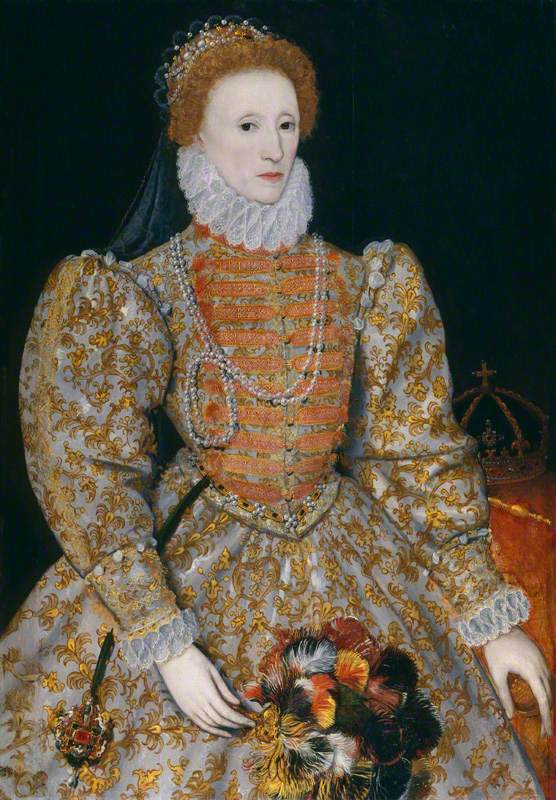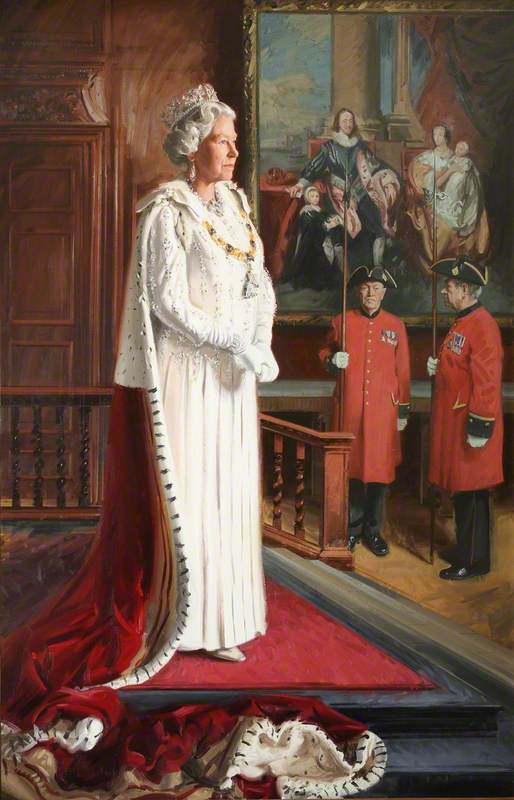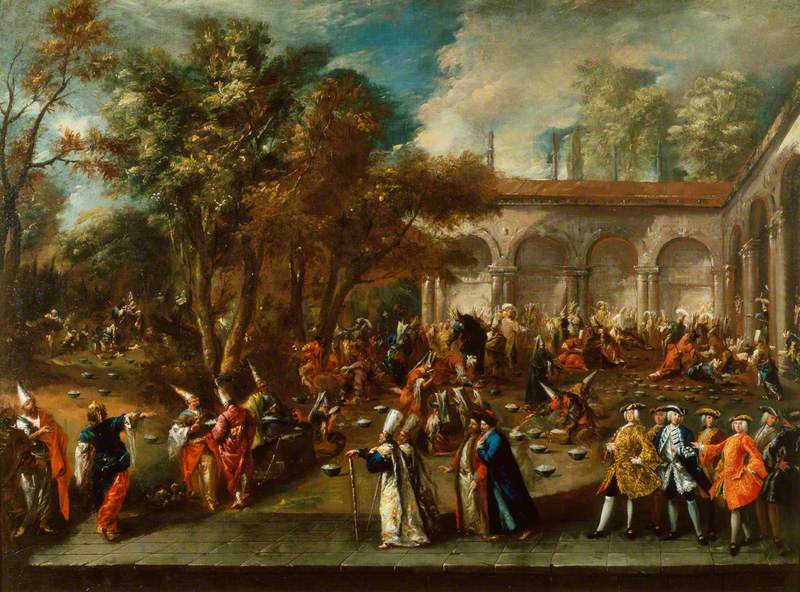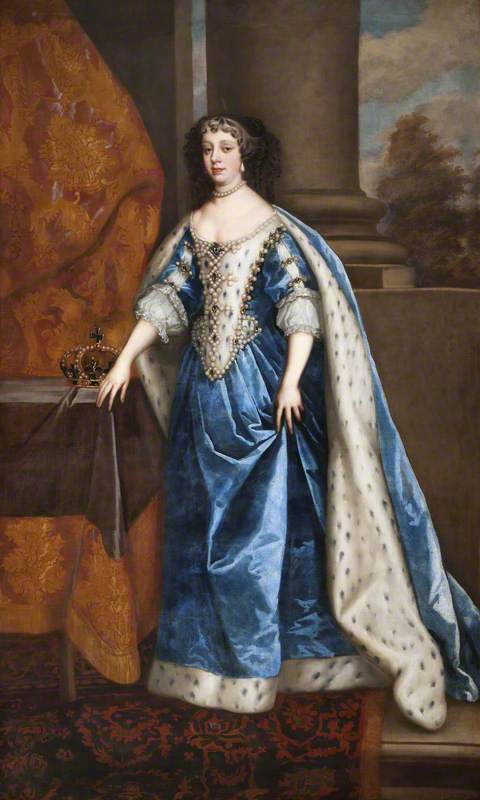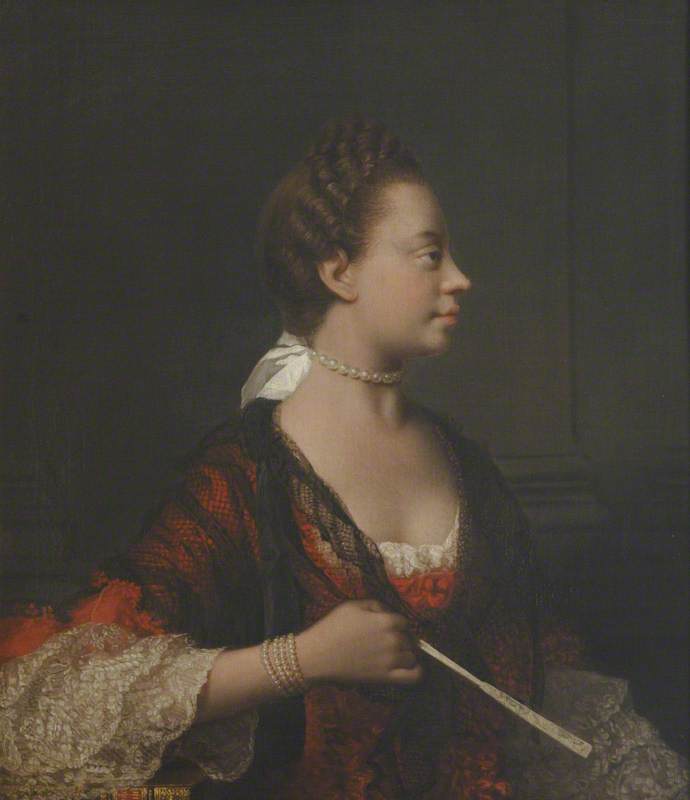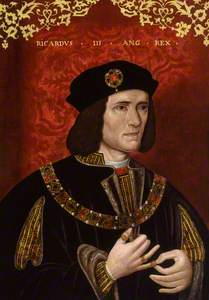The life of the White Queen, Elizabeth Woodville (1437–1492), was fraught with danger.
Married to the king during the Wars of the Roses, a bloody period that pitted the House of Lancaster against the House of York, she was forced to make and break allegiances in order to protect those most close to her, her family. But who could she trust in a time of danger and intrigue?

Image credit: Winchester City Council’s Topographical Art Collection
Lady Elizabeth Woodville Pleading for Her Children before Edward IV (detail) 1798
John Opie (1761–1807)
Winchester City Council’s Topographical Art CollectionElizabeth was left a widow aged 23, after her first husband the Lancastrian Sir John Grey of Groby was killed in battle. Elizabeth's late husband's lands were confiscated, and she was forced to petition her ‘enemy’, the new Yorkist, Edward IV, on behalf of her two sons. The moment she met him under an oak tree is captured in this romantic eighteenth-century painting. Legend has it she was so beautiful that Edward IV immediately fell in love with her.

Image credit: West Northamptonshire Council
The Marriage of Edward IV and Elizabeth Woodville (triptych) 1880–1910
Spanish Forger (active late 19th C–early 20th C) (attributed to)
West Northamptonshire CouncilElizabeth switched allegiances from Lancaster to York and was married to the King of England. In contrast to this painting, the only guests at the couple’s secret marriage were Elizabeth’s mother and two of her sisters. The scandal of a commoner marrying the king was bad enough, but the fact she was a widow and a supporter of the enemy faction was completely unthinkable. Elizabeth may have thought her position was now secure, but the union created many enemies.

Image credit: Manchester Art Gallery
The Earl of Warwick's Vow Previous to the Battle of Towton 1794–1795
Henry Tresham (1751–1814)
Manchester Art GalleryThe marriage alienated Edward’s cousin and chief supporter, the ‘Kingmaker’ Richard Neville, Earl of Warwick. This neo-classical painting depicts him fighting for the Yorkist victory which put Edward on the throne in 1461. Warwick had wanted Edward to marry a French princess. When his plans were thwarted, he was so angry that he joined the enemy Lancastrian faction. He made two attempts to force the king off the throne, killing Elizabeth’s father and one of her brothers in the process. During the second coup, King Edward fled abroad. Elizabeth, heavily pregnant, sought the sanctuary of Westminster Abbey, where she gave birth.

Image credit: Reading Museum
King Edward IV and His Queen, Elizabeth Woodville at Reading Abbey, 1464 1923
Ernest Board (1877–1934)
Reading MuseumIn 1471, a year after he fled, Edward returned from France at the head of an army. He vanquished Warwick at the Battle of Barnet and defeated his Lancastrian enemies once and for all at the Battle of Tewkesbury. Elizabeth’s position was now relatively secure and the marriage enjoyed a peaceful period. This painting depicts an earlier moment when Edward first revealed his wife to the Royal Council, in Reading. Elizabeth had ten children in total and, to consolidate her position, entered many of them into tactical and ambitious marriages.
Edward died suddenly in 1483 and Elizabeth was widowed once again. Their eldest son, Edward, hadn't come of age so the King's brother, Richard, was appointed Protector of the Realm. After an alleged attempt by Elizabeth to seize the throne, Richard imprisoned young Edward and his brother in the Tower of London.
The Duke of Gloucester spread rumours to discredit Elizabeth and her children's claim to the throne and, by the end of June, he was crowned King Richard. Fearful for her and her daughters' lives Elizabeth fled. When news reached her that her two sons had disappeared from the Tower, possibly murdered by Richard III, she began plotting her revenge.

Image credit: Royal Academy of Arts
Edward Matthew Ward (1816–1879)
Royal Academy of ArtsElizabeth switched sides again and encouraged an invasion of England by Henry Tudor, a Lancastrian claimant to the throne living in France, by pledging her daughter Elizabeth’s hand in marriage.
By allying herself with Henry Tudor, Elizabeth had backed a winner. Henry invaded England, and his forces defeated Richard's army at the Battle of Bosworth Field in 1485. He took the throne as Henry VII and married Elizabeth’s daughter Elizabeth of York, pictured here, soon after, finally uniting the two warring houses.

Image credit: National Trust Images
Remee van Leemput (1607–1675)
National Trust, Petworth HouseShe lived out the rest of her life as Queen Dowager at Bermondsey Abbey dying in 1492. From being a widowed commoner she'd become the ancestor of every Tudor monarch through her grandson Henry VIII.
Editor's note: This story first appeared on the BBC Arts website. The BBC is an Art UK project partner.












